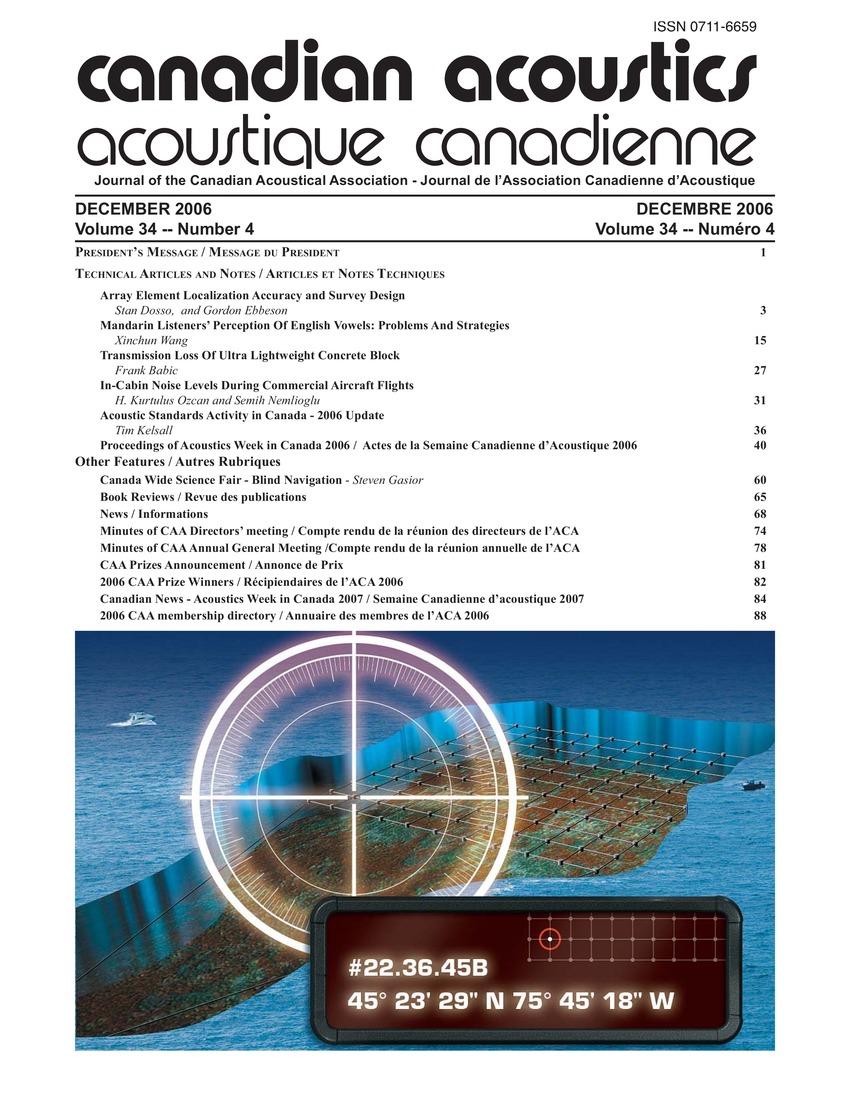Array element localization accuracy and survey design
Keywords:
Arrays, Optimal control systems, Signal receivers, Synchronization, Time measurement, Array element localization (AEL) methods, Optimal configurations, Survey designAbstract
Accurate localization of the individual elements of an underwater acoustic receiver array is an important prerequisite to advanced array processing applications. Array element localization (AEL) methods are typically based on inverting acoustic arrival-time measurements from controlled sources at (approximately) known positions to the receivers to be localized. This paper presents and illustrates a general approach to AEL inversion and to AEL survey design based on quantifying the posterior receiverlocation uncertainty, taking into account uncertainties in the data, source locations, sound speed, and water depth. The inversion is based on a fast ray-tracing algorithm that employs Newton's method and the method of images to determine eigenrays for direct and reflected arrivals. The efficiency of this approach allows computationally intensive analysis such as Monte-Carlo appraisal and nonlinear optimization for designing optimal source configurations. These algorithms provide a rigorous approach that can be applied to examine all aspects of AEL accuracy and survey design, illustrated here by several examples. It is shown that synchronized AEL surveys (in which source transmission times are known) provide only a minor improvement over non-synchronized surveys (often much simpler logistically), and the difference can be made up by using more sources in an optimal configuration or by including additional arrivals. Including multiple-reflected arrivals improves receiver depth estimates (provided water depth is well known), but provides little improvement in horizontal localization.Additional Files
Published
How to Cite
Issue
Section
License
Author Licensing Addendum
This Licensing Addendum ("Addendum") is entered into between the undersigned Author(s) and Canadian Acoustics journal published by the Canadian Acoustical Association (hereinafter referred to as the "Publisher"). The Author(s) and the Publisher agree as follows:
-
Retained Rights: The Author(s) retain(s) the following rights:
- The right to reproduce, distribute, and publicly display the Work on the Author's personal website or the website of the Author's institution.
- The right to use the Work in the Author's teaching activities and presentations.
- The right to include the Work in a compilation for the Author's personal use, not for sale.
-
Grant of License: The Author(s) grant(s) to the Publisher a worldwide exclusive license to publish, reproduce, distribute, and display the Work in Canadian Acoustics and any other formats and media deemed appropriate by the Publisher.
-
Attribution: The Publisher agrees to include proper attribution to the Author(s) in all publications and reproductions of the Work.
-
No Conflict: This Addendum is intended to be in harmony with, and not in conflict with, the terms and conditions of the original agreement entered into between the Author(s) and the Publisher.
-
Copyright Clause: Copyright on articles is held by the Author(s). The corresponding Author has the right to grant on behalf of all Authors and does grant on behalf of all Authors, a worldwide exclusive license to the Publisher and its licensees in perpetuity, in all forms, formats, and media (whether known now or created in the future), including but not limited to the rights to publish, reproduce, distribute, display, store, translate, create adaptations, reprints, include within collections, and create summaries, extracts, and/or abstracts of the Contribution.


